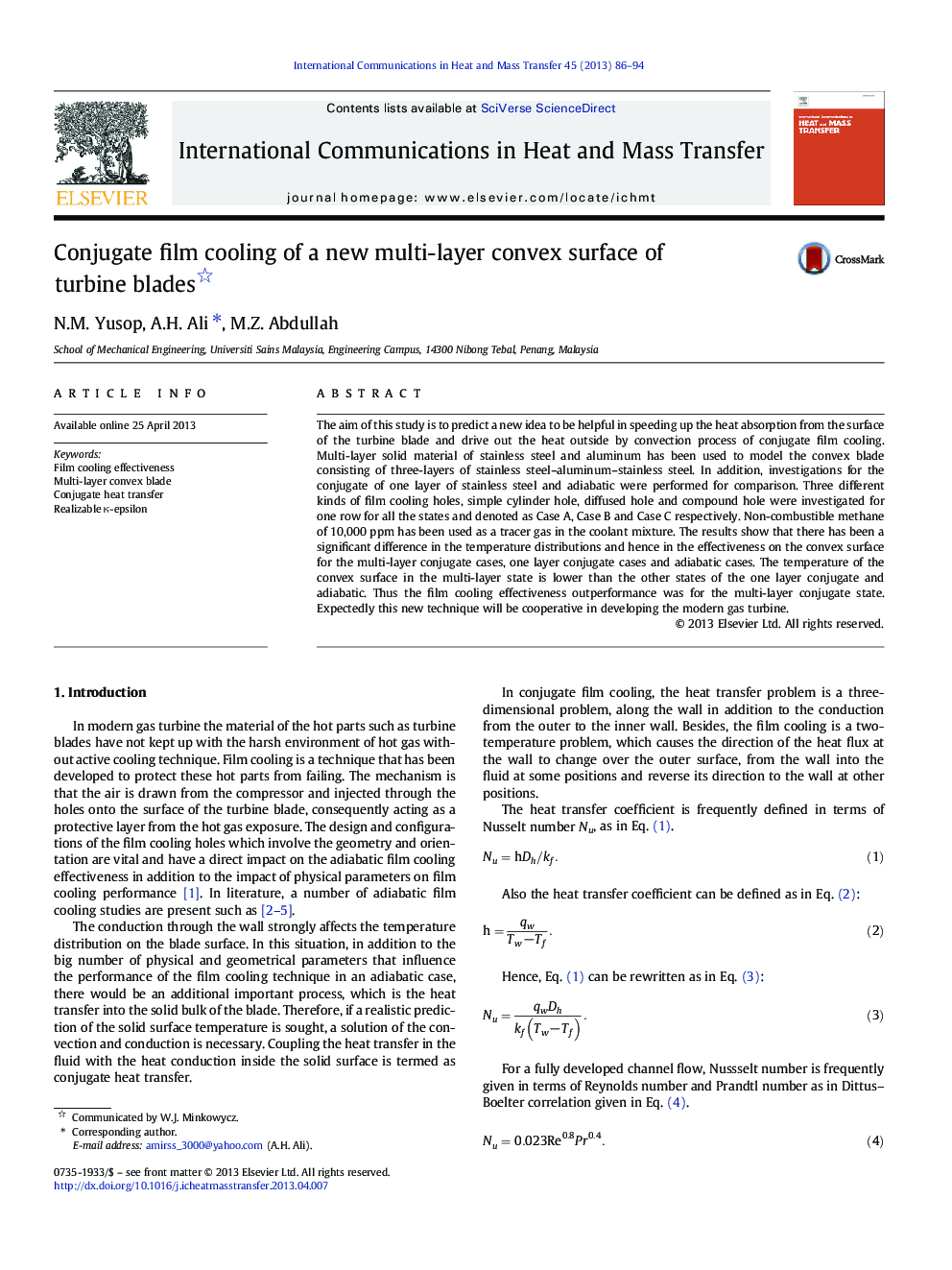| Article ID | Journal | Published Year | Pages | File Type |
|---|---|---|---|---|
| 653427 | International Communications in Heat and Mass Transfer | 2013 | 9 Pages |
Abstract
The aim of this study is to predict a new idea to be helpful in speeding up the heat absorption from the surface of the turbine blade and drive out the heat outside by convection process of conjugate film cooling. Multi-layer solid material of stainless steel and aluminum has been used to model the convex blade consisting of three-layers of stainless steel-aluminum-stainless steel. In addition, investigations for the conjugate of one layer of stainless steel and adiabatic were performed for comparison. Three different kinds of film cooling holes, simple cylinder hole, diffused hole and compound hole were investigated for one row for all the states and denoted as Case A, Case B and Case C respectively. Non-combustible methane of 10,000Â ppm has been used as a tracer gas in the coolant mixture. The results show that there has been a significant difference in the temperature distributions and hence in the effectiveness on the convex surface for the multi-layer conjugate cases, one layer conjugate cases and adiabatic cases. The temperature of the convex surface in the multi-layer state is lower than the other states of the one layer conjugate and adiabatic. Thus the film cooling effectiveness outperformance was for the multi-layer conjugate state. Expectedly this new technique will be cooperative in developing the modern gas turbine.
Related Topics
Physical Sciences and Engineering
Chemical Engineering
Fluid Flow and Transfer Processes
Authors
N.M. Yusop, A.H. Ali, M.Z. Abdullah,
